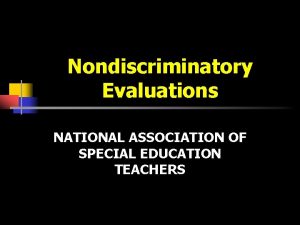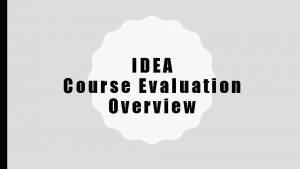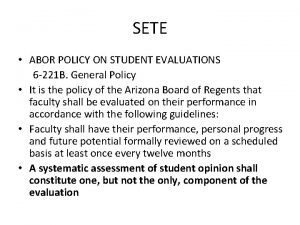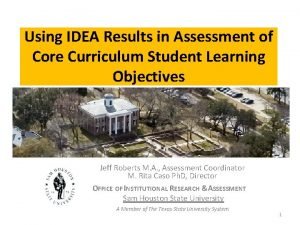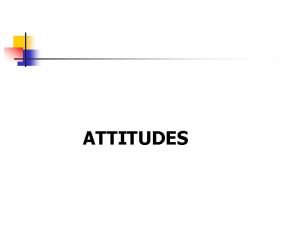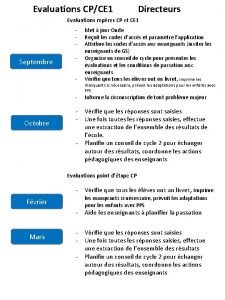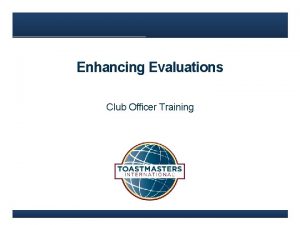Attitudes What are attitudes Attitudes are evaluations people







- Slides: 7

Attitudes What are attitudes? Attitudes are evaluations people make about objects, ideas, events, or other people. Attitudes can be positive or negative. Explicit attitudes are conscious beliefs that can guide decisions and behavior. Implicit attitudes are unconscious beliefs that can still influence decisions and behavior. Attitudes can include up to three components: cognitive, emotional, and behavioral. Example: Jane believes that smoking is unhealthy, feels disgusted when people smoke around her, and avoids being in situations where people smoke.

From attitudes to behaviour Behavior does not always reflect attitudes. However, attitudes do determine behavior in some situations: If there are few outside influences, attitude guides behavior. Example: Matt has an attitude that eating junk food is unhealthy. When he is at home, he does not eat chips or candy. However, when he is at parties, he indulges in these foods. Behavior is guided by attitudes specific to that behavior. Example: Megan might have a general attitude of respect toward seniors, but that would not prevent her from being disrespectful to an elderly woman who cuts her off at a stop sign.

Theory of planned behaviour The theory of planned behavior (abbreviated TPB) is a theory that links one's attitudes and behavior. The theory states that attitude toward behavior, subjective norms, and perceived behavioral control, together shape an individual's behavioral intentions and behaviors. According to theory of reasoned action(from which theory of planned action derives), if people evaluate the suggested behavior as positive (attitude), and if they think their significant others want them to perform the behavior (subjective norm), this results in a higher intention (motivations) and they are more likely to do so.


From behaviour to attitudes Sometimes attitudes can be formed or change after the behaviour is performed According to Bem’ self-perception theory we form an attitude taking a step back, look at our own past behaviour and than infer what our attitude must be. If someone asks you if you are environmentally friendly you could consider your past behaviour, if you recycle probably you will answer that you are environmentally friendly.

Cognitive dissonance refers to a situation involving conflicting attitudes, beliefs or behaviors. This produces a feeling of discomfort leading to an alteration in one of the attitudes, beliefs or behaviors to reduce the discomfort and restore balance. For example, when people smoke (behavior) and they know that smoking causes cancer (cognition), they are in a state of cognitive dissonance. Festinger's (1957) cognitive dissonance theory suggests that we have an inner drive to hold all our attitudes and behavior in harmony and avoid disharmony (or dissonance). This is known as the principle of cognitive consistency.

Self perception theory applies when people are unsure of their attitude on a particular topic (weak attitude) Cognitive dissonance applied when people already have strong attitude about particular topic but they act in a way that is counter their attitude. In both cases the attitute change is useful to have an inner mental model stable enaugh to predict behaviour and consequently the world around me



